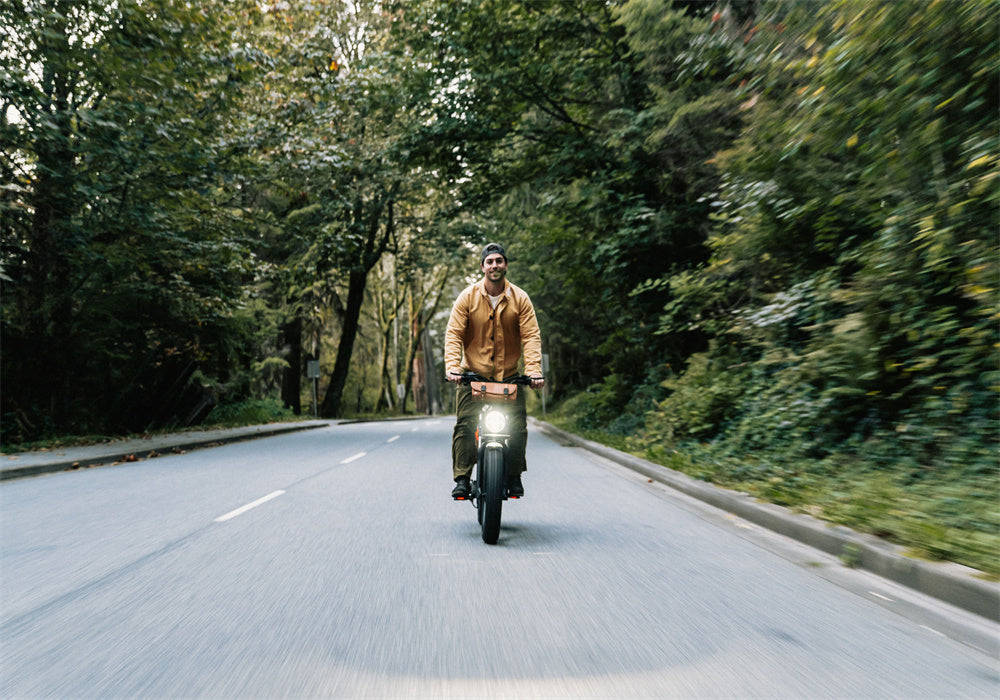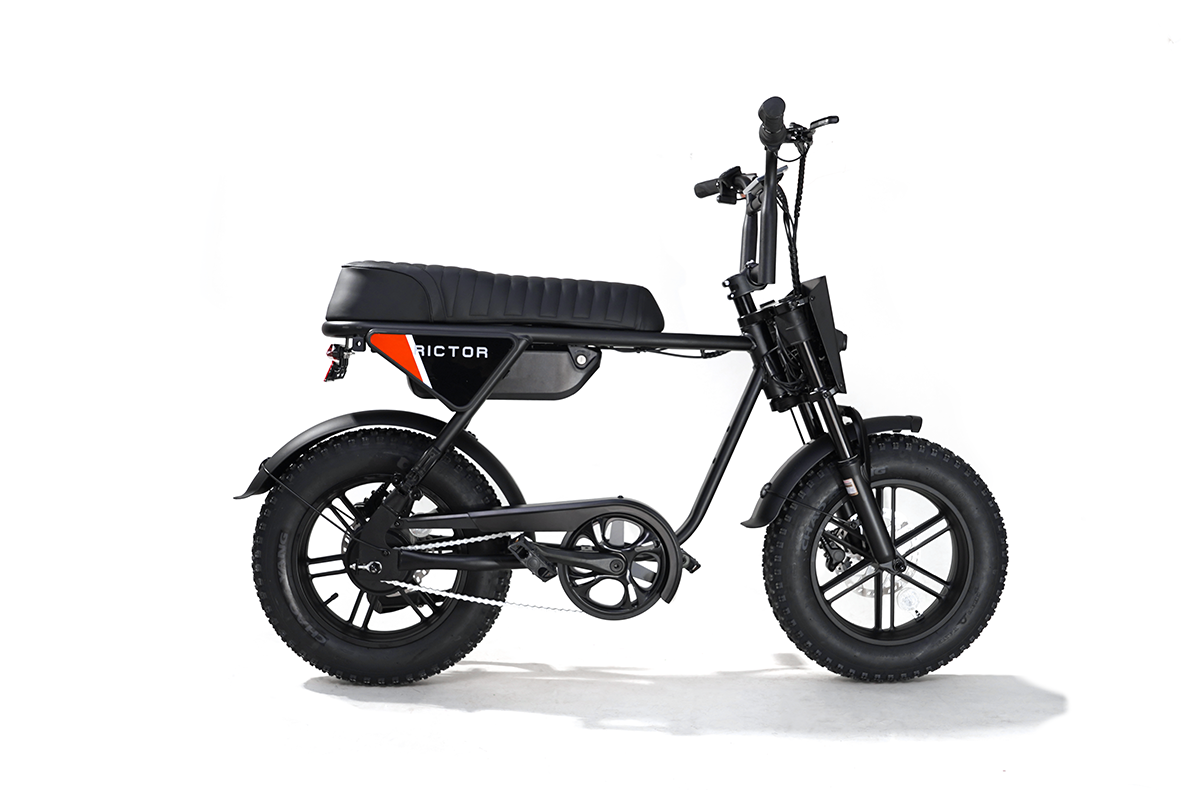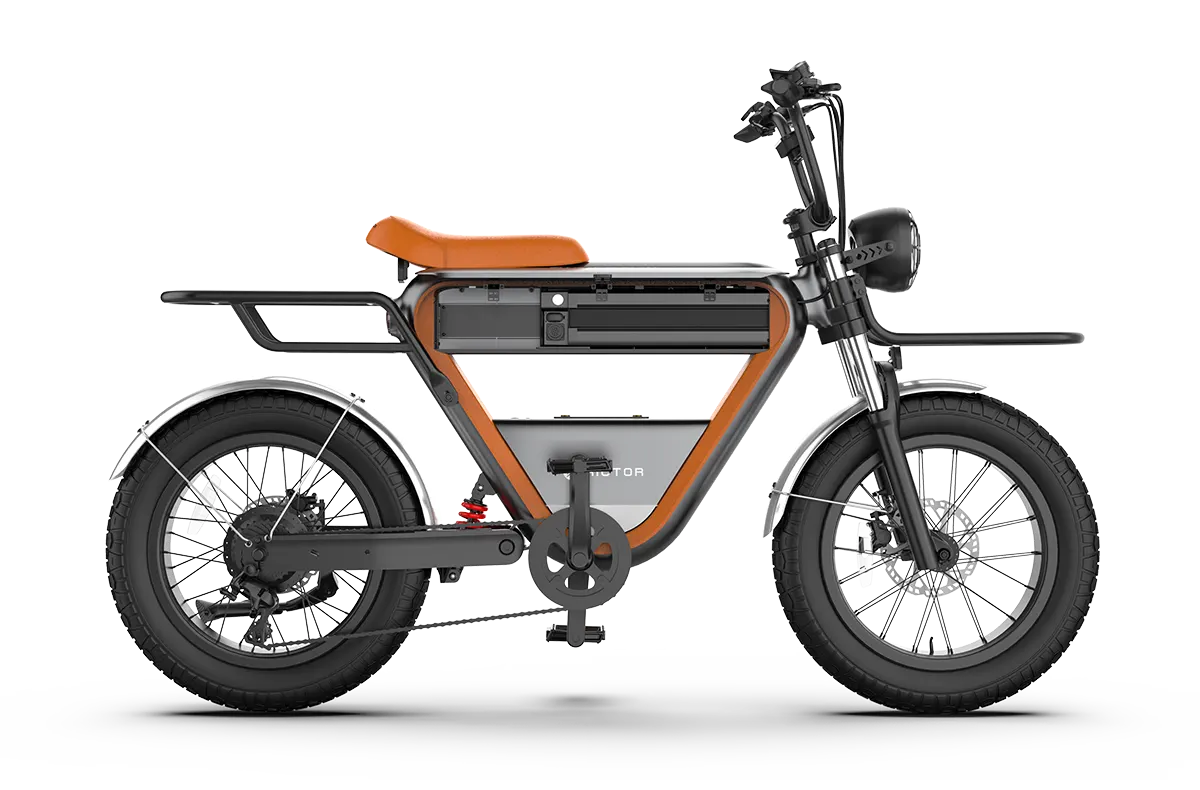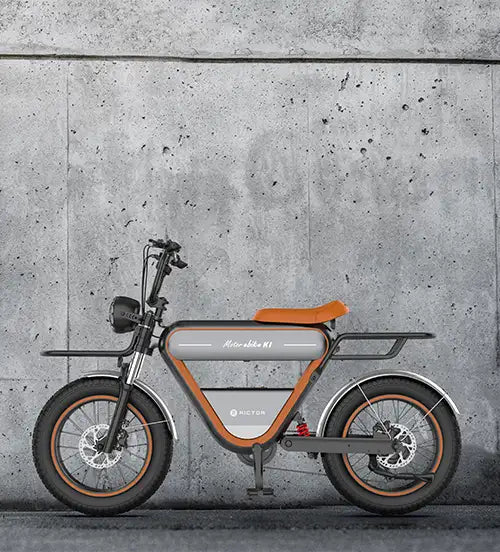
How Far Can an Electric Bike Go on One Charge?
The range of an electric bike depends on multiple variables, but understanding these key elements can help you make an informed decision about the bike that best suits your riding needs. From battery capacity to terrain, this guide will provide a comprehensive look at what influences electric bike range and what you can expect from different models.
Factors That Influence Electric Bike Range
There isn’t a one size fits all answer to how far an electric bike can travel, as several factors influence the distance. Key considerations include the battery capacity, motor power, rider weight, terrain type, riding speed, and the assist level you use.
Battery Capacity and Range
The most obvious factor affecting an electric bike’s range is its battery size. Measured in watt hours (Wh), the larger the watt-hour number, the more energy the battery holds, which directly impacts the distance the bike can travel on a single charge.
Most e-bike batteries range from 300Wh to 750Wh, with some high end models exceeding 1000Wh. Generally, a 500Wh battery can give an ebike a range of about 30 to 50 miles, depending on other factors like terrain and assist level.
Motor Power and Efficiency
The motor plays a significant role in determining how far your bike can go. Electric bikes typically feature motors ranging from 250W to 750W, and the more powerful the motor, the more energy it consumes, which may slightly reduce the range.
A higher powered motor can also make it easier to maintain higher speeds on difficult terrain, especially for heavier riders. A 750W motor(like rictor k1 750W electric bike) can be expected to deliver a range of around 35 to 50 miles, depending on the battery and riding conditions.
Rider Weight and Load
Your weight, as well as any additional cargo, will impact the range. Heavier riders demand more power from the motor, which can lead to higher energy consumption. This means that a rider weighing 250 lbs might see a reduced range compared to someone who weighs 150 lbs. The total load—including any extra gear, accessories, or even additional passengers on tandem bikes—also plays a role in determining how far the bike can travel on one charge.
Terrain and Riding Conditions
The terrain you ride on is another crucial factor that will determine your bike's range. Hilly or rough terrain requires more power, which can drain the battery faster. On the other hand, flat surfaces allow for more efficient energy use, increasing the bike’s overall range. Off-road biking or challenging trails may decrease the overall range by up to 30%, as the motor must work harder to power through obstacles and inclines.
SEE ALSO Why Are Electric Bikes Limited To 15 mph
Riding Speed and Assist Level
Most electric bikes offer several levels of motor assistance (ranging from eco mode to turbo mode). The higher the assist level, the faster the battery will drain. If you consistently ride at higher speeds or in turbo mode, expect your range to decrease significantly. Eco mode is the most efficient, offering the longest range, while high-power modes provide more speed and effort but at the cost of quicker battery depletion. The typical range for an electric bike on eco mode can be up to 50 miles, whereas using high-assist modes may reduce this to around 20 to 30 miles.
Average Electric Bike Range
While the exact distance will depend on the factors mentioned above, the average range for most electric bikes on a single charge falls between 20 and 60 miles. Entry level ebikes with smaller batteries typically range around 20 to 30 miles, while mid-range and higher-end models with larger batteries can achieve up to 50 miles or more on a single charge under optimal conditions.
Optimizing Your Electric Bike’s Range
To get the most out of your electric bike’s battery, there are a few things you can do. Here are some tips to maximize efficiency and increase your overall range:
Maintain Proper Tire Pressure: Low tire pressure can create more rolling resistance, which uses more energy. Keep your tires properly inflated to help improve range.
Keep the Battery Charged: Charge your battery fully before long rides and avoid letting it deplete completely. Regular charging helps maintain its lifespan.
Use the Right Assist Level: If you’re looking to maximize range, use eco or low-assist modes whenever possible, especially on flat terrain.
Optimize Your Riding Style: Avoid sudden accelerations and try to ride at a steady pace to conserve energy.
Conclusion
The range of an electric bike depends on several variables, including battery size, rider weight, terrain, and motor power. On average, most electric bikes can travel between 20 and 50 miles on a single charge, with higher-end models reaching up to 60 miles under optimal conditions. By choosing the right bike for your needs and riding smartly, you can ensure that your electric bike takes you as far as you need to go.
FAQs
How can I increase my electric bike’s range?
To increase your bike’s range, maintain proper tire pressure, use lower assist levels, and avoid high speeds or steep inclines. Regular battery maintenance also helps ensure it performs efficiently.
Can a heavier rider expect a reduced range on an electric bike?
Yes, heavier riders generally use more energy, which can decrease the range of the bike. The motor has to work harder to support the additional weight, which will draw more power from the battery.
What’s the typical range for an electric bike with a 500Wh battery?
An electric bike with a 500Wh battery typically offers a range between 30 to 50 miles, depending on the terrain, riding conditions, and the motor’s power.





